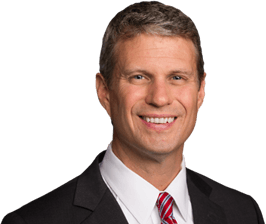
Rep. Bill Huizenga
With funding for protecting the Great Lakes on the chopping block under the Trump administration’s budget proposal, U.S. Rep. Bill Huizenga (R-MI) is making both the ecological and the economic case for saving the largest freshwater system in the world.
“The Great Lakes ecosystem is extremely important and I believe we need to continue supporting it – the cleanup of it and the restoration of it,” Huizenga told The Ripon Advance in a recent interview.
As co-chair of the bipartisan Great Lakes Task Force, Huizenga’s top priority is safeguarding Great Lakes Restoration Initiative (GLRI) funding, the largest investment in the Great Lakes in two decades.
In proposing cuts of nearly one-third to the Environmental Protection Agency (EPA), President Donald Trump’s preliminary budget blueprint would eliminate the GLRI’s $300 million per year in funding.
“GLRI touches on so many other things, whether we’re dealing with algal blooms, cleanup of superfund sites,” or other so-called areas of concern, Huizenga said. “The other big issue that is connected to this is invasive species. That will be another focus of mine.”
Since the beginning of the program in 2010, GLRI resources have funded more than 2,000 projects to improve water quality, restore native habitat, control invasive species like Asian carp, and other environmental issues, according to the EPA.
Without GLRI funding, “A lot of the projects that have been set in motion or that the ground work has been done on would probably grind to a halt,” he said. “That’s the thing I’m not sure everybody understands. This is a multi-year process often times, getting projects up and running and approved.”
Huizenga recently reached out to Mick Mulvany, director of the White House Office of Management and Budget, about having further discussions on the issue of preserving funding for the Great Lakes.
“Mick is very open to having the conversation and we look forward to making the case,” Huizenga said.
A lifelong resident of Michigan’s Ottawa County, Huizenga represents the 2nd District, which spans more than 100 miles of Lake Michigan shoreline. His focus has turned to educating his colleagues in Congress about the success the GLRI has achieved.
In one such example, thanks to GLRI funding, White Lake in Muskegon County was removed from the list of areas of concern under the Great Lakes Water Quality Agreement in 2014.
The Great Lakes also helps drive the economies of eight states and Ontario, supporting commerce through maritime transportation, robust tourism and jobs.
Fully implementing Great Lake restoration strategies would generate $80 billion to $100 billion in economic benefits, according to a Brookings Institution study. That includes the positive impact from fishing and recreation, reduced costs to municipalities and higher property values along the shoreline.
Furthermore, with Michigan surrounded by water on three sides, the lakes support more than 800,000 jobs for Michigan residents alone, according to Great Lakes Commission data.
“In general there is a lack of understanding about what the Great Lakes are all about if you don’t hail from this area,” Huizenga said.
Earlier this month, the congressman teamed up with U.S. Reps. Mike Bishop (R-MI) and Marcy Kaptur (D-OH) to lead a bipartisan letter to Trump requesting that he instruct the Army Corps of Engineers to continue working with state and local officials to implement a long-term solution for keeping Asian carp out of the Great Lakes. The lawmakers urged the Army Corps to release its evaluation of the Brandon Road Lock and Dam, which was expected to contain measures to combat the invasive species from entering waterways but has been delayed.
Huizenga also recently testified before the House Appropriations Energy and Water Subcommittee on the importance of using a greater proportion of funds from the Harbor Maintenance Trust Fund to support water infrastructure projects across the Great Lakes.
That funding is vital for the 140 federally maintained commercial and recreational ports and harbors in the Great Lakes, he said, many of which are facing a crisis due to lack of funding. Poorly maintained harbors drive up the cost of U.S. exports and imports, which threatens U.S. economic growth, he testified.
Huizenga is considering crafting legislation that would help Great Lakes harbors compete with other larger harbors and ports around the country when it comes to qualifying for federal assistance for harbor maintenance. He would like to see the classification of federal commercial harbors be changed to reflect the inherent differences between harbors in the Great Lakes and major deep-water ports.
“We are seasonal, we are smaller, we are subject to the whims of water levels in a way that the oceans are not,” he said. “By definition, we shouldn’t have to hit the same tonnage, for example, as the Port of Mobile to qualify as a federal commercial harbor.”



